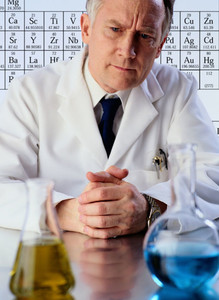As more brand-name drugs lose patent protection, use of less expensive generics continues to rise. A new report, published in April 2011 by IMS Health, shows a slowdown in US spending on drugs, but an increase in the percentage of prescriptions filled by generics and a faster rate of capture of market share by generics after patent expiry.
Generics grab 80% share of US market and fill 78% of prescriptions
Home/Reports
|
Posted 13/05/2011
 0
Post your comment
0
Post your comment

All 10 of the most prescribed medicines in the US during 2010 were generics, with generic equivalents of Vicodin (hydrocodone/acetaminophen) leading the way. Only three brand-name medicines made the top 25—Lipitor (atorvastatin), Plavix (clopidogrel) and Singulair (montelukast)—although it must be said that they roll in at first, third and sixth place respectively when spending is considered. Spending on Lipitor (atorvastatin) in the US was a staggering US$7.2 billion in 2010, followed by a not inconsiderable US$6.1 billion and US$4.1 billion respectively for Plavix (clopidogrel) and Singulair (montelukast).
With figures like these, generics manufacturers must be ‘licking their lips’ in anticipation. Cholesterol-reducer Lipitor (atorvastatin), which has worn the crown of best-selling drug for many years, will lose its patent protection in the US in June 2011. While blood thinner Plavix (clopidogrel) and asthma treatment Singulair (montelukast) are set to lose their protection in 2012.
The IMS report showed that spending on brand-name drugs declined or grew more slowly than the total market, while spending on generics increased at a higher rate. Total spending on medicines increased by 2.3% in 2010, less than half of the 5.1% growth seen in 2009. Spending on branded drugs totalled US$229 billion, but declined by 0.7%, while spending on unbranded generics increased by 21.7% and branded generics by 4.5%.
During 2010, branded products worth US$12.6 billion in sales faced patent loss and generic competition. These included Pfizer’s treatment for Alzheimer’s disease Aricept (donepezil), sanofi-aventis’s deep vein thrombosis treatment Lovenox (enoxaparin) and Boehringer Ingelheim’s Flomax (tamsulosin), each of which had spending above US$1 billion during the 12 months prior to their patent expiration.
The IMS research also showed that in 2010 the rate at which generics capture market share within six months of patent loss had increased to 80% compared to only 55% in 2006. Generics also filled 78% of prescriptions in 2010, representing a 4% increase on 2009.
Related articles
2012’s biggest patent expiries
2011’s biggest patent expiries
Source: IMS Health
Guidelines
New guidance for biologicals in Pakistan and Hong Kong’s independent drug regulatory authority
Canada poised to remove requirement for Phase III trials for biosimilars
Policies & Legislation
ANVISA tackles 24-month backlog in biologicals post-registration petitions
US EO: delivering Most-Favored-Nation Prescription Drug Pricing to American patients
Advancing biologicals regulation in Argentina: from registration to global harmonization

Home/Reports Posted 10/10/2025
China-to-West pharma licensing deals surge in 2024 amid innovation push

Home/Reports Posted 22/05/2025
The best selling biotechnology drugs of 2008: the next biosimilars targets








Post your comment